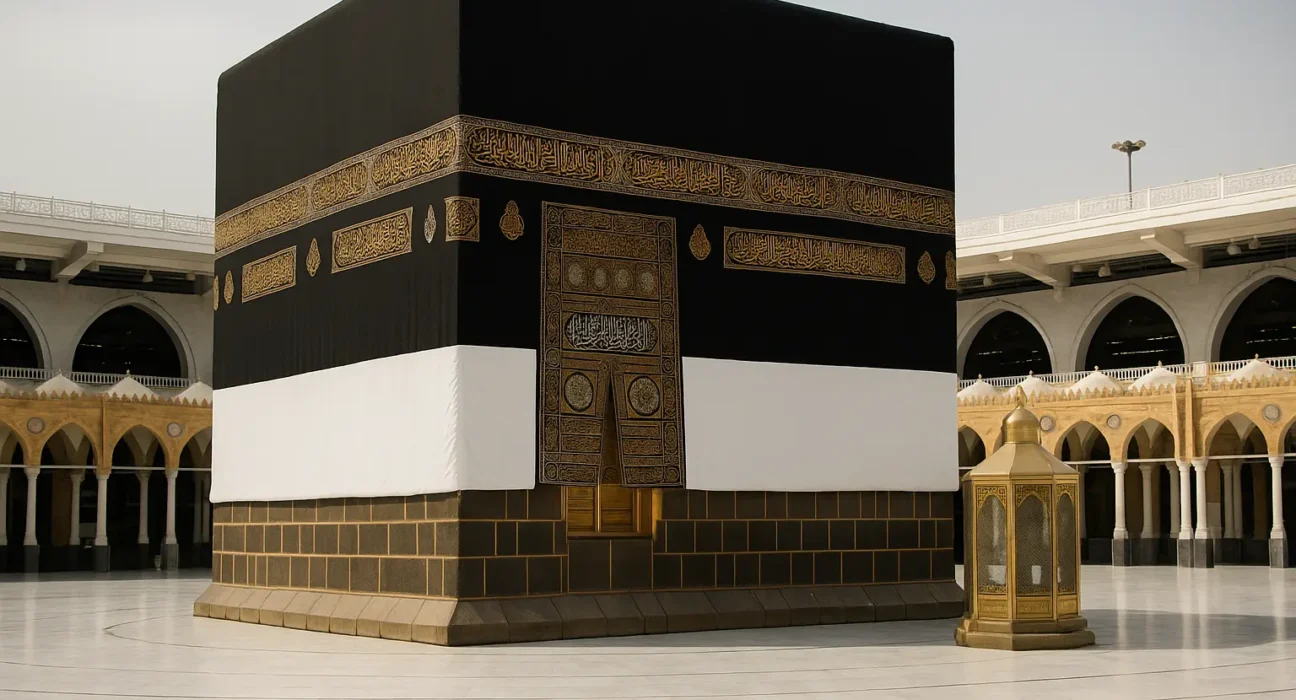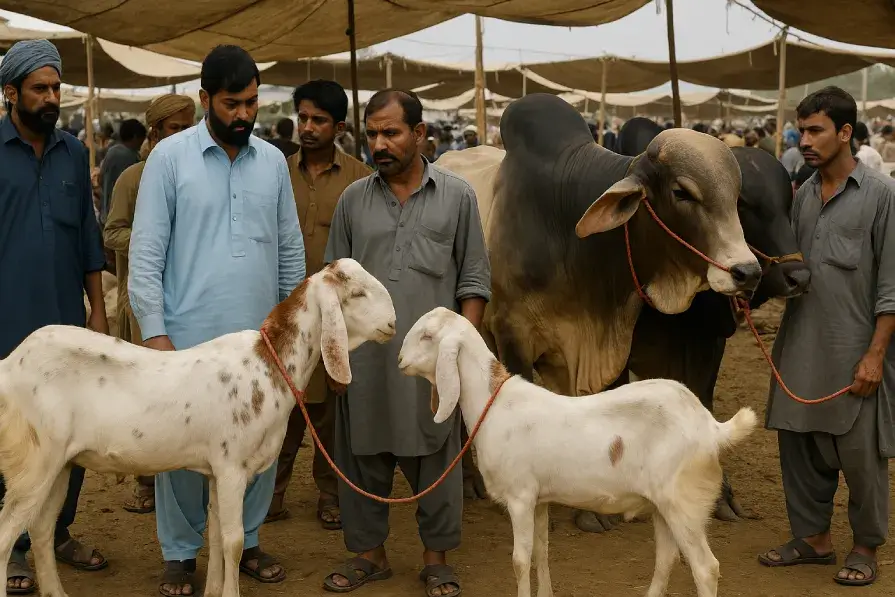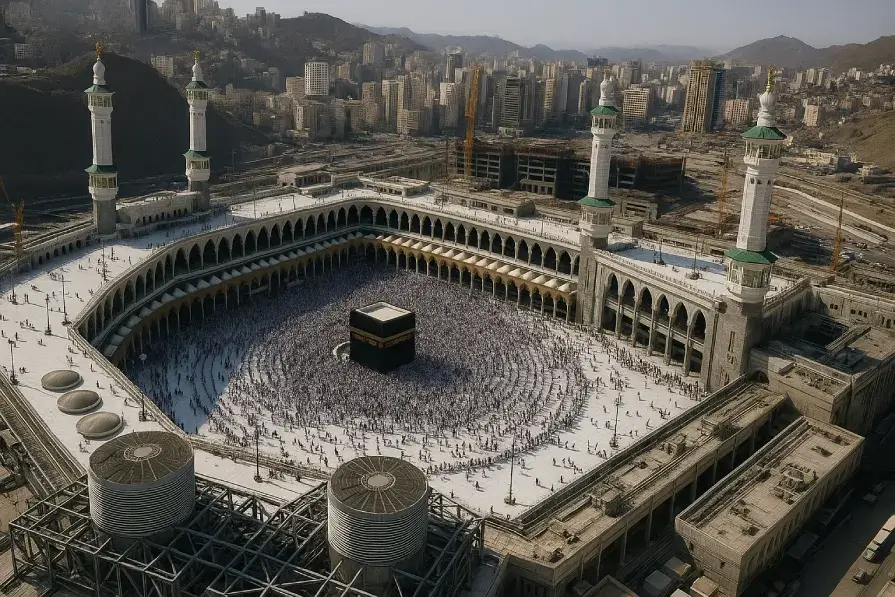Hajj Preparations Begin: Kaaba’s Kiswah Raised by 3 Meters

Since Hajj is coming soon, all preparations are being done in Makkah now. A key tradition that shows the city is ready for Hajj is lifting up the Kaaba’s Kiswah. For this year, the Kiswah has been raised up three meters, showing that the preparations for the arrival of millions of pilgrims have begun.
What is the Kaaba’s Kiswah?
The Kaaba, Islam’s holiest place, has a beautiful black cloth covering it called the Kiswah and situated inside the Masjid al-Haram in Makkah. The Kiswah, with Holy Quran passages embroidered in gold and silver thread, is replaced yearly during the season of Hajj. The Kiswah is very important in both religion and culture because it stands for respect, cleanliness, and the unity of the Muslim Ummah.
The tradition of raising the kiswah has been upheld for many centuries and is full of meaning. Choosing to replace the cloth is both a ritual and a way to keep the Kaaba safe during the big gathering for Hajj.
Why is the Kiswah Raised During Hajj?
The people in charge of the Two Holy Mosques increase the height of the Kiswah by three meters annually before the arrival of pilgrims. It is important to protect the sacred cloth from possible damage that comes with large numbers of people. Moved by strong faith, some pilgrims attempt to touch or keep small parts of the Kiswah as souvenirs, most of them not knowing it could destroy it.
By raising the Kiswah, the administration keeps the Kaaba safe and prevents anything from damaging it. Modesty and respect are ensured by putting a white cloth made of cotton over the exposed area below the Kiswah.
A Tradition of Preservation
The tradition of lifting the Kiswah can be traced back for hundreds of years. In the past, a number of pilgrims considered the Kiswah to be magical and tried to collect fragments, which made it deteriorate. Thanks to better management and information, this tradition is mostly contained now, but the custom of lifting the Kiswah goes on.
The General Presidency for the Affairs of the Two Holy Mosques oversees a special team who perform the ritual with care, attention, and speed. The whole event recognizes the dedication of pilgrims and respects the need to take care of Islamic sanctity.
Duration of the Raised Kiswah
From the time of Tarwiyah until the 15th of Dhul-Hijjah, the Kiswah stays at the higher position to protect it during the busiest part of the pilgrimage. There are Tarwiyah (8th), Arafah (9th), Eid al-Adha (10th) and the Tashreeq days within this period, which bring the greatest number of people to Makkah every year.
Once these days are over, the Kiswah is brought down slowly to its regular place. This important act signals that Hajj is completed and that worship at the Kaaba has returned to its everyday schedule.
Symbolism Behind the Raised Kiswah
Apart from keeping the Kaaba safe, the raised Kiswah shows pilgrims and Muslims around the world that Hajj has started. It shows that the Hajj season is underway and that Makkah is expecting the guests of Allah (Duyuf al-Rahman).
Besides, seeing the raised Kiswah makes pilgrims feel humble and reminds them their journey is sacred and should be about spiritual change, not material things.
Technological and Logistical Support
With better technology and improved logistics, the process of preserving and maintaining the Kiswah has gotten much better. A factory in Makkah is where the Kiswah is now made, with expert artisans working with the best available silk and gold-silver thread. Every year, the creation of the Kiswah uses 600 kilograms of dyed silk and 120 kilograms of gold and silver threads.
The great care that goes into making the Kiswah adds to the reason it must be raised during Hajj.
The Role of Pilgrims
Authorities are working to guard the Kiswah, but it is also up to the pilgrims to keep the Kaaba guarded. It is an act of worship in Islam to be polite when you are surrounded by many people.
People visiting are asked to keep their hands off the Kiswah and use that respect to benefit from Tawaf, prayers, and quiet time.
A Spiritual Reminder
Building the Kiswah is a sign to everyone that the true goal of Hajj should be remembered. Hajj is supposed to help people renew their religion, not to collect souvenirs from Mecca. With this tradition, pilgrims are asked to remember submission, humility, and unity.
By doing these, the Saudi authorities underline their commitment to protecting the tradition and making Hajj better. With this tradition, the Saudi authorities protect the sacredness and glory of the Kaaba.
Final Thoughts
Putting up the Kiswah at the Kaaba is an important and useful act for Muslims. Before Hajj starts, the Kiswah being raised motivates Muslims from around the world to think about the blessed journey ahead. It makes it clear that the place is looked after, ready for millions of Muslims.
As Hajj gets closer and Muslims get ready, the Kiswah is kept safe and respected, just like it has always been.









